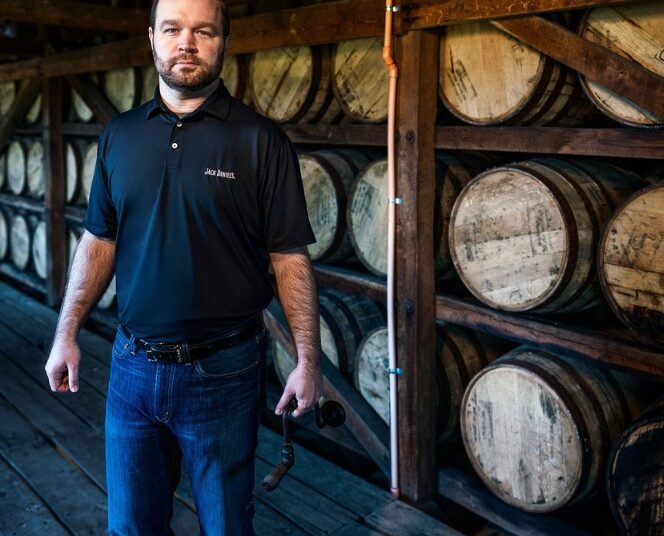A town in Lincoln County, Kentucky is under attack. Not by gunmen or bandits and not by aliens, but by something more insidious: a dark and feathery fungus that has coated homes, cars, patio furniture and road signs in a sooty crust, residents said. It’s the whiskey fungus, and it’s thanks to America’s favorite native whiskey, Jack Daniel’s.
The ethanol-fueled fungus is not new, it has thrived for centuries around distilleries and bakeries. It’s been the source of complaints from residents who live near Kentucky bourbon distilleries, Canadian whiskey makers and Caribbean rum manufacturers.
Now, it is creating friction—and legal issues– between some residents of Lincoln County, Tenn., and Jack Daniel’s, the famed distillery founded in 1866 in neighboring Moore County.

For months, some residents have complained that a sooty, dark crust has spread uncontrollably, fed by alcohol vapors wafting from charred oak barrels of aging Jack Daniel’s whiskey.
Jack Daniel’s has built six warehouses, known as barrelhouses, to age whiskey in the rural county, which is home to about 35,000 residents, and now is building a seventh on a property that has room to house one more, a company spokesman said. The distillery has asked the county to rezone a second property where it could build six additional barrelhouses. This has alarmed the residents even more.
A company representative, Donna Willis, told county officials in November that 14 barrelhouses would generate $1 million in annual property tax revenue for the county, which had approved about $15 million in general fund spending for the 2022 fiscal year. Needless to say, this adds insult to injury for the already fed-up residents.
Christi Long, the owner of a local mansion built in 1900, which she operates as a venue for weddings and other events, sued the county in January, contending that barrelhouses near her property lacked the proper permits. Ms. Long’s lawyer, Jason Holleman, said he planned to ask the judge and the county to stop Jack Daniel’s from using other barrelhouses near Ms. Long’s 4,000-square-foot mansion, known as the Manor at ShaeJo.
Ms. Long and her husband, Patrick Long, said that whiskey fungus had already inundated the property, darkening the copper roof and exterior walls, creeping over the rock garden and metal gate and encrusting the branches of magnolia trees. Nearby, it blackens metal road signs. “This fungus now is on steroids,” she said.

The Longs said they use a high-pressure hose to wash the property every three months with Clorox bleach and water, but the fungus always returns. Mr. Long said. “It’s just disgusting.”
Melvin Keebler, general manager of the Jack Daniel Distillery, said in a statement that the company “complies with all local, state, and federal regulations regarding the design, construction, and permitting of our barrelhouses.”
“We are committed to protecting the environment and the safety and health of our employees and neighbors,” Mr. Keebler said.
At a county commission meeting in November, Ms. Willis, the director of technical services, maintenance and barrel distribution at Jack Daniel’s, said that studies have shown that the fungus is not hazardous to human health and does not damage property.
Showing stunning insensitivity to the residents’ complaints, M. Willis said, “Could it be a nuisance? Yeah, sure. And it can easily be remedied by having it washed off.”
However, she also said the company would not agree to power-wash homes, saying Jack Daniel’s could be held liable for any damage.












